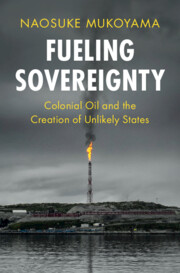Book contents
- Fueling Sovereignty
- LSE International Studies
- Fueling Sovereignty
- Copyright page
- Dedication
- Contents
- Figures
- Tables
- Acknowledgments
- 1 Introduction
- 2 Theory of Separate Independence
- 3 Colonial Oil and Decolonization in Borneo
- 4 Colonial Oil and Decolonization in the Lower Gulf
- 5 Separate Independence in Other Settings
- 6 Varying Historical Impacts of Resource Endowment
- 7 Conclusion
- References
- Index
2 - Theory of Separate Independence
Published online by Cambridge University Press: 14 March 2024
- Fueling Sovereignty
- LSE International Studies
- Fueling Sovereignty
- Copyright page
- Dedication
- Contents
- Figures
- Tables
- Acknowledgments
- 1 Introduction
- 2 Theory of Separate Independence
- 3 Colonial Oil and Decolonization in Borneo
- 4 Colonial Oil and Decolonization in the Lower Gulf
- 5 Separate Independence in Other Settings
- 6 Varying Historical Impacts of Resource Endowment
- 7 Conclusion
- References
- Index
Summary
Chapter 2 explains the historical setting during the period of colonization and decolonization and develops the theoretical framework of this book. The successful cases of separate independence covered in this book are cases where oil production started at a specific time: after colonization but well before the “window of sovereignty” closed. When this economic activity occurred in protectorates where the colonizers offered protection to the local rulers and ruled through them, the result was separate independence. The central argument of this book, therefore, is that when faced with a project for amalgamation with neighboring areas, (1) oil production during the colonial period and (2) the protectorate system led to separate independence. The two factors enabled some colonial entities to achieve statehood separately by providing them with material and political incentives to pursue separate independence, perceived viability as a sovereign state, which includes both financial self-sufficiency and security, and bargaining power vis-à-vis the colonizers.
- Type
- Chapter
- Information
- Fueling SovereigntyColonial Oil and the Creation of Unlikely States, pp. 27 - 55Publisher: Cambridge University PressPrint publication year: 2024



